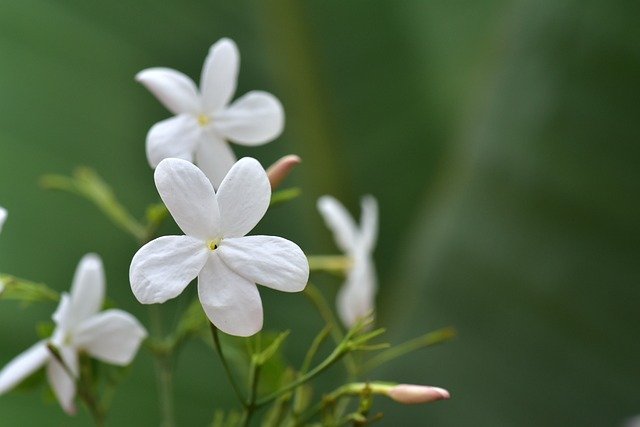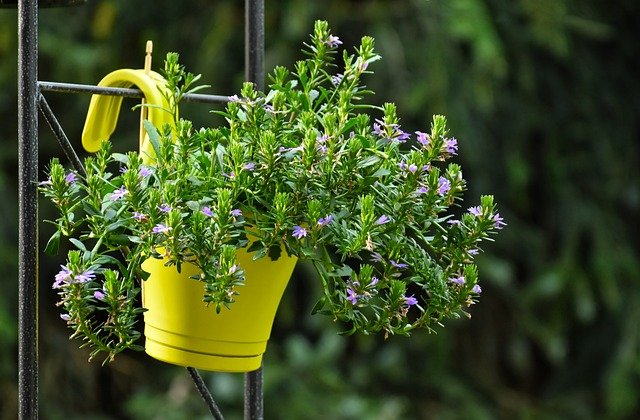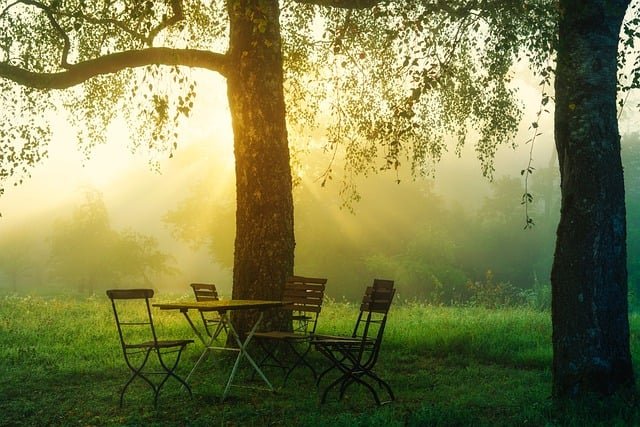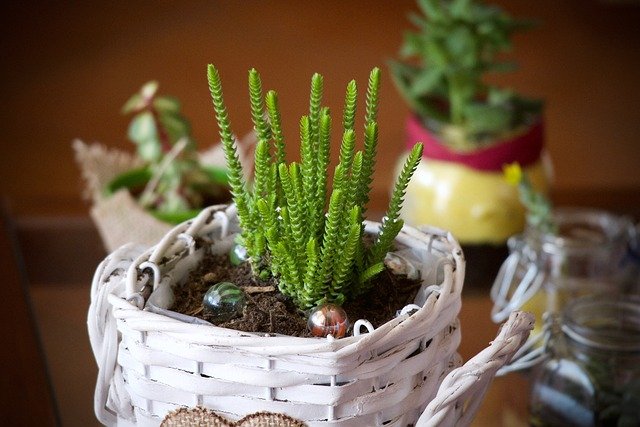How to prune star jasmine – and keep this vigorous climber under control
Star jasmine is a popular floral vine in California and the southern United States, where it’s cultivated both vertically (like up a trellis) and as a spreading ground cover. It’s very aromatic and is known to attract bees—the fragrance is comparable to that of a jasmine shrub, though this is a distinct group of plants.

Native to Asia, star jasmine is a liana plant—one that endeavors to ascend vertical supports or other plants in order to reach sunlight. It is regarded to be a member of the Apocynaceae family, which also includes natal plum, frangipani, and oleander. Star jasmine is best planted in the spring and will grow rapidly, often adding between 3 and 6 feet a year. However, the first year the plant is getting established, it expends much of its energy establishing a robust root system and may not appear to grow much (if at all) above ground.
Star jasmine, or Trachelospermum jasminoides, is a versatile and popular climbing plant valued for its aromatic white blossoms and luxuriant foliage. Native to China and Japan, this evergreen climber flourishes in a variety of climates and locations, making it a top choice for cultivators worldwide. Looking just as beautiful in the winter garden as it does at the height of summer.
Training star jasmine to ascend over a wall or perhaps a garden structure, such as a trellis, pergola or fence is relatively straightforward, and with regular anchoring in and support, the plant will rapidly grow and establish itself.
White star-like blossoms emerge in spring, with a honeyed fragrance that will fill your backyard with the richest aroma. No doubt this climber is the go-to selection for those landscaping their yard or contemplating planting ideas for their garden and has been a favorite of mine for many years.
Star jasmine is not to be confounded with summer jasmine, or Jasminum officinale. Whilst they may appear similar, star jasmine is not truly in the jasmine plant family, it has merely been given this name because of ornamental similarities.
This flowering climber is vigorous, however, and pruning is essential to keep star jasmine appearing orderly and healthy. Without pruning, unruly branches will begin to crowd out other plants and ascend where they are not supposed to.
All it takes is a little attention and the occasional spot of maintenance, and your star jasmine will grow well, and crucially, where you want it to grow.
HOW TO PRUNE STAR JASMINE
Pruning is essential to maintain your star jasmine climber appearing orderly and organized. With a small amount of attention, you will ensure that your floral climber remains healthy and well maintained.
When To Prune Star Jasmine
Pruning star jasmine isn’t a difficult task. Your climber will regenerate rapidly, so there is no need to fret too much about precision. Knowing when to prune, however, is crucial, as pruning back at the incorrect time will diminish blossoming and can cause harm to your ascending plant.
Star jasmine, as an evergreen vine, does not shed its foliage during winter and thrives well through US hardiness zones 8 – 10. This ‘simple to cultivate climber is a fixture in the southern states,’ says Jen McDonald, horticultural expert and a co-founder of horticultural Girls.
Whilst its growth slows down during the harsher months of the year, it will keep your yard appearing luxuriant and verdant. ‘It can tolerate frigid conditions to 10 degrees Fahrenheit,’ Jen explains.
As many gardeners will know, many deciduous climbers, such as climbing roses, can be pruned while inert, but as star jasmine is not deciduous, and so a slightly different approach is required.
Whilst various experts suggest differing schedules regarding the best time for pruning star jasmine, in my experience, this is best done after the primary flowering period in late spring or early summer. Doing so at this time is recommended as you do not interfere or perturb the climber during the flowering period. And after all, who wouldn’t want to make the most of the starry-white, fragrant blooms?
Following this heavy pruning, completed after flowering, which will entail a reduction in size and shaping the climber as required, I would suggest only an occasional, light pruning as and when necessary throughout the year.

‘Once established, star jasmine requires minimal maintenance,’ Jen explains, and an occasional mutilation to the base is tolerated.’ Whilst any butchering of vegetation is not recommended, the sentiment remains true. This robust and vigorous climber is durable, and you should not be afraid to get those pruning shears out… just make sure it is at the correct time of year: after blossoming has come to an end in late spring or early summer.
How To Prune Star Jasmine
Star jasmine is ‘known for its moderate to rapid growth rate, averaging about 12 to 24 inches per year,’ says Mike Murphy, plant expert and proprietor of You Had Me At Gardening.
If your star jasmine is a little unkept and overgrown, be intrepid, pruning back some vines by as much as one-third or even one-half can be necessary. Using pointed and spotless secateurs, such as these pruning shears from Walmart, delicately prune your climber, making incisions above a stalk or blossom. ‘Regular pruning helps maintain an orderly appearance and encourages lateral growth,’ Mike explains.
When pruning large shrubs or ascending plants, I always find it helps to stand back and inspect your work. Doing so will assist to guide your next move. Once you are satisfied with the shape, you can further train and guide your climber by binding the plant in the direction you want it to grow, using twine such as this Garden Twine from Walmart.
As Mike says, careful pruning can then foster lateral growth, ensuring that your climber remains robust and healthy, and crucially, full of fragrant flowers. ‘Avoid binding too securely to allow for natural movement and prevent injury to the stems,’ Mike says.
Following this, occasional trimming through the growing season might be necessary. I have grown star jasmine over the garden gate for several years, and swerving and diving out of the way of tendrils that hang low is not optimal. A modest quantity of pruning through the summer is just sufficient. Just remember that the annual substantial prune is best done in late spring or early summer after flowering has ceased.
Star Jasmine Care
Although a vine, star jasmine is comparatively modest in stature. It is a deciduous evergreen plant that is winter-hardy in USDA hardiness zones eight through 10. Further north, it is sometimes grown in containers and moved indoors for the winter, or grown as an annual and planted anew each spring.
Star jasmine is simple to tend for and can pretty much be forgotten about once established. It will produce milky white blossoms in late spring that are pinwheel-shaped and about 1 inch across. They’re typically very fragrant and can be bothersome to certain people, particularly those with allergies or sensitivities to fragrances. Star jasmine is a reasonably carefree plant, and only requires pruning to control its growth (like if it’s impeding on a nearby house or structure) or if it has become deceased, diseased, or damaged.
Light
Star jasmine will flourish in full sun or part shade, but for maximum blossom potential, choose a location that receives loads of light. The vine will generate the most blossoms if it receives at least eight hours of sunlight per day. If you choose to cultivate your star jasmine as a ground covering and it spends a lot of time shaded by larger plants or trees, you may see a reduction in the number of blossoms the plant produces.
Soil While star jasmine isn’t particularly fussy about its soil, it will thrive best in a composition that is moderately damp and well-draining. If you’re sowing multiple star jasmine plants as ground cover, space them out at least 5 feet apart in order to avoid overwhelming the plants. Additionally, star jasmine can flourish in a variety of varying pH conditions, ranging from 6.0 to 7.0.

Water
In order for your star jasmine to grow successfully, it should be watered routinely. For most plants and locations this means once a week, but you may need to increase your cadence if your environment is exceptionally humid or arid, or if you’ve planted your jasmine in a container. A good rule of thumb is to water your star jasmine when the upper inch of soil is dried and allow the soil to dry out in between waterings.
Temperature and Humidity
Star jasmine is a moderately cold-hardy plant and can tolerate temperatures as low as 10 degrees Fahrenheit (though generally, not for a protracted period of time). On average your jasmine will grow and flourish best in temperatures spanning from 60 to 75 degrees Fahrenheit. Additionally, star jasmine adores humid conditions and will flourish best in a moderately saturated environment.
Fertilizer
It’s essential to wait until your star jasmine is established before you begin fertilizing it. Once the roots are well-established, you can feed your star jasmine in early spring and then again in mid-summer with a balanced, slow-release fertilizer formulated for shrubs and trees.
Propagating Star Jasmine
You can propagate star jasmine by removing cuttings from a robust and established progenitor plant. Begin by removing cuttings from the parent plant just below a node (a small nodule where a leaf or blossom will emerge) that are at least 6 inches long. Dip the cut-end of the piece in a rooting hormone powder, then position each one in a planter that has been filled with gritty, well-moistened potting mix.
Cover your planter with a plastic dome or plastic bag to help hold in moisture and position it atop a heating mat or in a room that is around 75 degrees Fahrenheit. Keep the soil moist—you should see roots develop with three to four weeks, at which point the plant can be planted up into a slightly larger container before eventually being relocated into the garden a few weeks after.
Common Pests/Diseases
Star jasmine vine doesn’t attract too many parasites or diseases. It is susceptible to scale insects, which deposit honeydew on the vines and can consequently contribute to the development of sooty mildew. If you observe indicators of scale on your plants, treat your star jasmine with a horticultural oil like neem oil. Additionally, Japanese beetles may also be a concern in some areas and can be treated the same way.
If you have trees in your yard, star jasmine may wrap itself around the trunk. Trim the plant away before it encompasses the trunk of the tree, as it can compromise the tree’s health. It can also colonize adjacent garden plots or structures, so it’s a good idea to keep a watch on its growth.Can I Lift And Replant Star Jasmine?
Whilst you can transplant star jasmine, this can be challenging depending on the scale of your ascending plant. The optimal time to do this is late spring, allowing it to establish roots before any mild summer conditions. Using a garden fork, gingerly loosen roots and soil at the base of your climber, slowly coaxing your plant out of the soil. It is recommended to prune back your climber to only a few feet in height so that the plant can concentrate on root growth in the first year following replanting.
Star jasmine, as an evergreen climber, will ultimately cover walls and garden structures with its appealing verdant foliage and delightfully fragrant blooms. Why not consider also planting winter jasmine, for a burst of yellow color that will help to add impact during the winter months?






